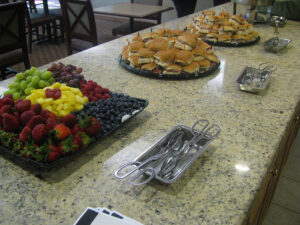 This is a guest post from Eric Lanke, the CEO of the Fluid Power Association.
This is a guest post from Eric Lanke, the CEO of the Fluid Power Association.
How does an association executive build and sustain the culture of his organization? Specifically, what is his role versus others in the organization’s hierarchy? Conventional wisdom says culture comes from the top and, in many respects, that’s true. But associations, like all organizations, are systems. And knowing that, are there also decentralized strategies that association CEOs should be leveraging?
This is the topic Jamie asked me to tackle in a series of guest posts–and I’ve already written about the use of very specific language in the office to help ensure staff are focused on the needs of actual members, not on their possibly misinformed ideas about who their members are, and about how professional education in the industry or profession your association represents can help association staff develop a greater understanding and appreciation for the world of your members.
Today, I’m going to talk about another thing happening in my own organization that will hopefully contribute to our ability to build and sustain a culture that actively seeks to understand the world of our members. We’re outsourcing our meeting planning functions.
I’ll bet that sounds counter intuitive to some of you. Early in my association career I, myself, was exposed to a culture that taught that our in-person meetings were the one definite place where we could interact directly with our members, and that seeing to all the event logistics (as stated in their website) on their behalf was integral to developing an understanding of their preferences and personalities. And while that perspective is not entirely without merit, what happens much more in my experience is not the development of uniquely tailored experiences, but the coordination of a series of homogeneous events, where expense savings and economies of scale take precedence. In other words, as a general rule of thumb, we don’t plan events for individuals. We plan events for groups, and the more we can streamline and standardize our approach to doing so, the more successful we will decide we have been.
I’m not saying there’s anything wrong with that. But I’ve come to recognize that having my staff focused on those tasks takes a lot of their time and their energy. If you’re sending your staff people to your association’s events, what would you want them spending the majority of their time doing? Counting chairs and adjusting catering guarantees? Or interacting with your members and learning more about their preferences and personalities? For me, leading a relatively small-staffed association, I believe the bigger ROI is going to come with the latter.
The move has made me wonder what other tasks we could outsource in order to increase the amount of time our staff members spend interacting directly with our members. In the case of our meeting planning function, the change has helped me bring greater clarity to how everyone in the office perceives what we are there to do. Yes, we must plan engaging events for our members, and, yes, we must increase our understanding of our members in order to do so. But when some functional task gets in the way of increasing that understanding, it’s time to think about other ways of getting those tasks done.
